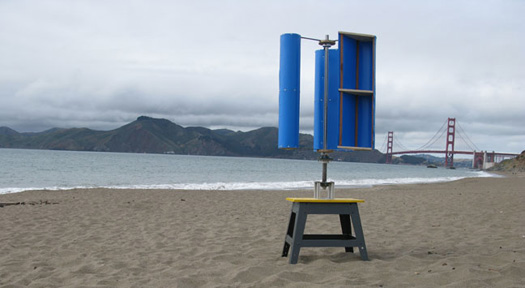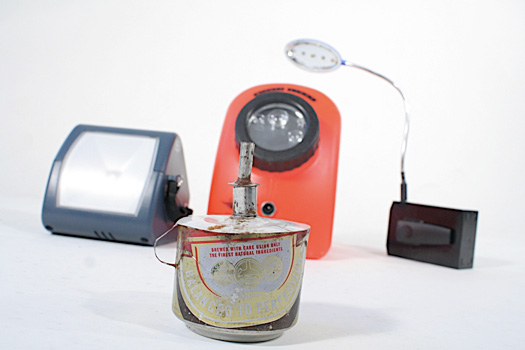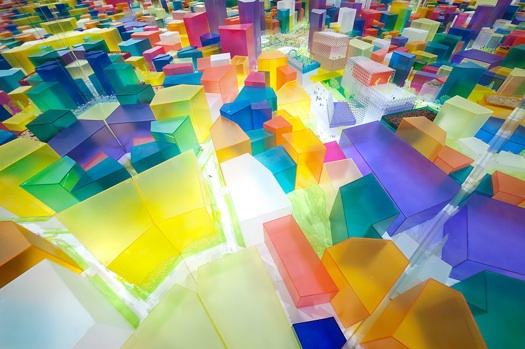
June 10, 2010
Catapult Design: How to Run a Design Firm for Social Change

Wind turbine developed by Catapult Design with Engineers Without Borders–USA for manufacture and use in Guatemala. Photos courtesy Catapult Design
Though Catapult Design, a small, nonprofit studio in San Francisco, was founded in January 2009, it’s already helped to electrify seven rural health clinics in Rwanda that serve 120,000 people. In Guatemala, it’s working on developing a low-cost wind turbine. And in Tanzania, it’s involved in an off-the-grid LED lighting project.
Despite these early achievements, Heather Fleming, Catapult’s chief executive, says it’s too early to celebrate the firm’s success or its business model as a design studio focused on social change. “The question is, how do you pull this off financially in the long term?” she asks.
That’s a crucial question for any design studio, but especially for one with revenue of $59,800 last year, of which 66 percent was from donors and a mere 8 percent was earned income (the remainder was in-kind support). In a field in which large, for-profit design businesses like IDEO, Frog and Continuum do much of the heavy lifting, Catapult’s nonprofit model offers a new way to think about how designers can engage social innovation projects. As design for social change becomes more widely known and funding opportunities increase, these issues are taking on greater importance. So far, however, “everyone realizes there is a huge opportunity but no sustainable model yet,” says Mariana Amatullo, director of DesignMatters, an NGO based at Art Center College of Design in Pasadena, California.
Design for social change is currently taking place on many levels. A few school-based organizations like DesignMatters deploy students and faculty in its projects; Design that Matters, a nonprofit low-cost design firm in Cambridge, Massachusetts, that grew out of MIT’s Media Lab relies on volunteers in academia and industry.Â

LED-powered lamps (pictured with inferior and dangerous paraffin lamp). Catapult is assisting nonprofit Dissigno to determine which model should be distributed in Tanzania.
But for the most part, it’s the big earners of the design industry that have the staff and financial depth to devote to long-term design-for-social-change projects that involve substantial amounts of time and resources. These projects are taken on for full or reduced fees or done pro-bono on a case-by-case basis, and are often supported by foundations, nonprofits, for-profits and governments. (Continuum, for example, donates about 1 percent of annual revenues to pro-bono programs.) The incentive is not profit, because these are not money-making operations, so the reward goes beyond typical return on investment. “Why do we do this work? Because we can’t imagine not doing it,” explains Anna Muoio, who leads Continuum’s social innovation initiative. “We are finding increasingly that young design talent cares and wants to work at a place where they can feel and see the impact they have in the world.” Adds Robert Fabricant, who heads Frog’s design-for-impact initiatives: “The general model will pay for itself in marketing and awareness and recruiting and good will with employees and clients and generating positive leads.”
Catapult’s mission is to help disadvantaged communities in developing countries, and its clients so far are typically small nonprofits, grassroots nonprofits in developing countries, or U.S.-based nonprofits working in developing countries, as well as for-profit social enterprises. Fleming, who co-founded Catapult with Tyler Valiquette, says the idea grew out of her work for the organization Engineers Without Borders, where she led a volunteer group focused on humanitarian design projects. But that eventually became frustrating, Fleming explains, because “the volunteer model sucks. It serves the volunteer not the client.” The goal for Catapult is for all clients to hire the firm and pay for services, although in its start-up phase that’s not always the case: for the Rwanda electrification project, Fleming did the energy assessment for free, with the client paying travel and logistical costs, because, she explains, “the project offered a distinct advantage to Catapult’s knowledge base. We wanted to learn about solar.”
Working with the Inhangane Project, Catapult is helping to install photovoltaic systems to electrify medical clinics in Rwanda.
One advantage of Catapult’s nonprofit status is that it allows nonprofit clients to integrate the design firm’s proposals into their own grant applications. “It’s like a stamp of approval,” Fleming says. Being small and community-focused and experienced in developing countries also helps attract business. Dr. Wendy Leonard, who heads the Ihangane Project — the initiative in Rwanda to electrify health clinics — says she was impressed by Catapult’s “specific experience in resource-limited settings” and its “acknowledgment that small-scale projects are significant.”
Yet Catapult’s nonprofit business model might be expanded or enhanced, Fleming says, acknowledging that design-for-social-change firms might consider a hybrid organizational structure. Because nonprofits can own for-profits, Fleming doesn’t rule out Catapult’s spinning off a for-profit unit if, for example, it works on a wind turbine that becomes scalable and decides to turn that into a commercially viable product. She also wants to diversify Catapult’s portfolio to include medium- and large-size clients and to lessen its current lopsided reliance on donors: “In general, we tell people we’re a nonprofit aspiring to be a for-profit, because, for the most part, we function like a for-profit design firm.”
Another way forward is the NewDesign concept, an idea developed by Continuum and Larry Keeley, a partner at Doblin/Monitor, to create a nonprofit entity that matches for-profit design firms with foundations to engage in high-impact social-change projects at reduced fees. Like Catapult’s model, NewDesign is one of many efforts to address some of the fundamental issues in advancing design for social change, including funding and how to maximize resources and talent and make the social-innovation sector more appealing for a wider array of business and organizations. Overall, says Continuum’s Muoio, “the challenge is to create a business model that is viable and demonstrates the value of this work.”
Observed
View all
Observed
By Ernest Beck
Recent Posts
DB|BD Season 12 Premiere: Designing for the Unknown – The Future of Cities is Climate Adaptive with Michael Eliason About face: ‘A Different Man’ makeup artist Mike Marino on transforming pretty boys and surfacing dualities Designing for the Future: A Conversation with Don Norman (Design As Finale) Innies see red, Innies wear blue: Severance’s use of color to seed self-discovery
 Ernest Beck is a New York-based freelance writer and editor.
Ernest Beck is a New York-based freelance writer and editor.



